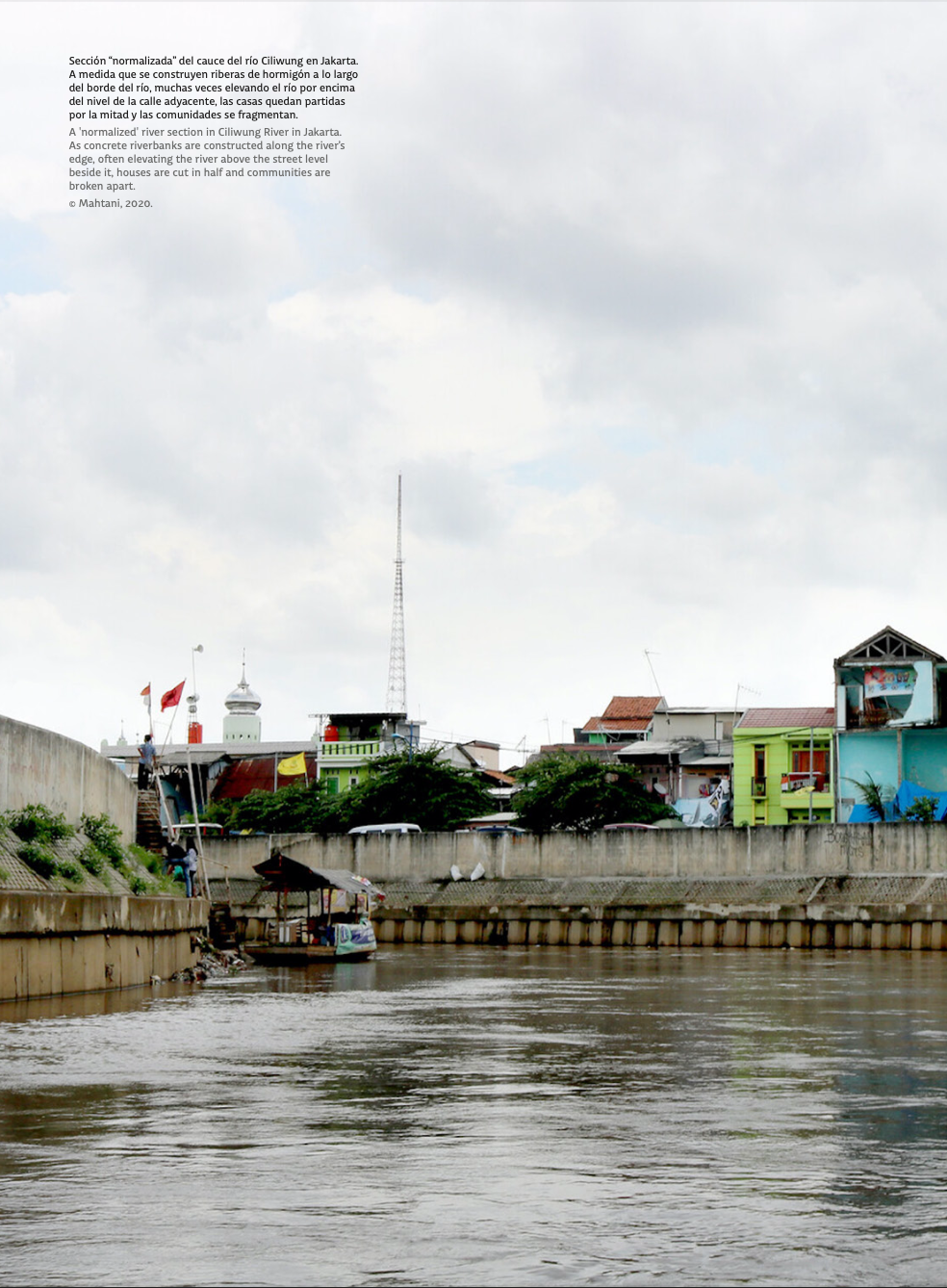Cartografías ambivalentes: el riesgo de cartografiar la inundación
Barra lateral del artículo

Palabras clave:
Contenido principal del artículo
Resumen
Este artículo explora la ambivalencia de la cartografía. Respondiendo al diagnóstico formulado por Ulrich Beck sobre la modernidad como la sociedad del riesgo, así como a la necesidad de situar dicho riesgo, el artículo se enfoca en un proyecto cartográfico de Nashin Mahtani que traza el recorrido de ríos que, según ella, “respiran dentro” de los paisajes urbanos en lugar de inundarlos. Al reconfigurar lo que significa que el río exista en un lugar, el proyecto deja en suspenso la presunción del mapa como un producto de líneas inertes, al tiempo que suspende la noción de que el riesgo es algo cuantificable de antemano. En definitiva, este mapa ambivalente no construye el espacio, sino que pone de relieve la cualidad viviente de las formas cartográficas.
Detalles del artículo

Esta obra está bajo una licencia internacional Creative Commons Atribución-NoComercial 4.0.
Materia Arquitectura proporciona acceso inmediato y gratuito a todos los contenidos de esta edición electrónica, publicada simultáneamente con la edición impresa. Materia Arquitectura no cobra honorarios a los autores por ningún concepto.
Todos los contenidos de esta edición electrónica se distribuyen bajo licencia Creative Commons de “Atribución-Copartirigual 4.0 Internacional” (CC-BY-SA).
La licencia Creative Commons permite el acceso libre e inmediato al contenido y permite que cualquier usuario lea, descargue, copie, distribuya, imprima, busque o genere enlaces a los textos completos de los artículos, permitiendo también que estos puedan ser rastreados para indexarlos, pasarlos como datos a software o usarlos para cualquier otro propósito legal. Asimismo, la licencia otorga derechos de uso a quienes a su vez utilicen una licencia abierta (Creative Commons o equivalente).
Los derechos de los textos y las imágenes publicadas pertenecen a sus autores, quienes otorgan a Materia Arquitectura la licencia para su uso. La gestión de los permisos y la autorización de publicación de las imágenes (o de cualquier material) que contenga derechos de autor y sus consecuentes derechos de reproducción en esta publicación es de exclusiva responsabilidad de los autores de los artículos.
Toda vez que mencionen su origen, los autores son libres de distribuir sus artículos por otros medios. Cualquier reproducción total o parcial del material deberá citar su procedencia.
Descargas
Citas
BECK, U. (1992). Risk Society: Towards a New Modernity (M. Ritter, Trans.). SAGE.
BECK, U. (2016). The Metamorphosis of the World: How Climate Change is Transforming Our Concept of the World. Polity.BEHAR, R. (1996). The Vulnerable Observer: Anthropology That Breaks Your Heart. Beacon Press.
BORGES, J. L. (1999). On Exactitude in Science. In A. Hurley (Trans.), Collected Fictions (p. 325). Allen Lane.
BUDIYONO, Y., AERTS, J. C. J. H., TOLLENAAR, D., & WARD, P. J.(2016). River Flood Risk in Jakarta Under Scenarios of Future Change. Natural Hazards and Earth System Sciences, 16(3), 757–774. https://doi.org/10.5194/nhess-16-757-2016
DEBORD, G. (2006). Introduction to a Critique of Urban Geography. In K. Knabb (Ed. & Trans.), Situationist International Anthology (pp. 8-12). Bureau of Public Secrets.
HARAWAY, D. J. (1988). Situated Knowledges: The Science Question in Feminism and the Privilege of Partial Perspective. Feminist Studies, 14(3), 575–599.HARLEY, J. B. (1992). Deconstructing the Map. In T. J. Barnes & J. S. Duncan (Eds.), Writing Worlds: Discourse, Text and Metaphor in the Representation of Landscape(pp. 231–247). Routledge.
KJEKSTAD, O., & HIGHLAND, L. (2009). Economic and Social Impacts of Landslides. In K. Sassa & P. Canuti (Eds.), Landslides: Disaster Risk Reduction (pp. 573–587). Springer. https://doi.org/10.1007/978-3-540-69970-5_30
MAHTANI, N. (2020, September). Torrential Urbanism and the Future Subjunctive. E-Flux, Accumulation. https://www.eflux.com/architecture/accumulation/345108/torrential-urbanism-and-the-future-subjunctive/
SCOTT, J. C.(1998). Seeing Like a State How Certain Schemes to Improve the Human Condition Have Failed. Yale University Press.
TSING, A. L. (2015). The Mushroom at the End of the World: On the Possibility of Life in Capitalist Ruins. Princeton University Press